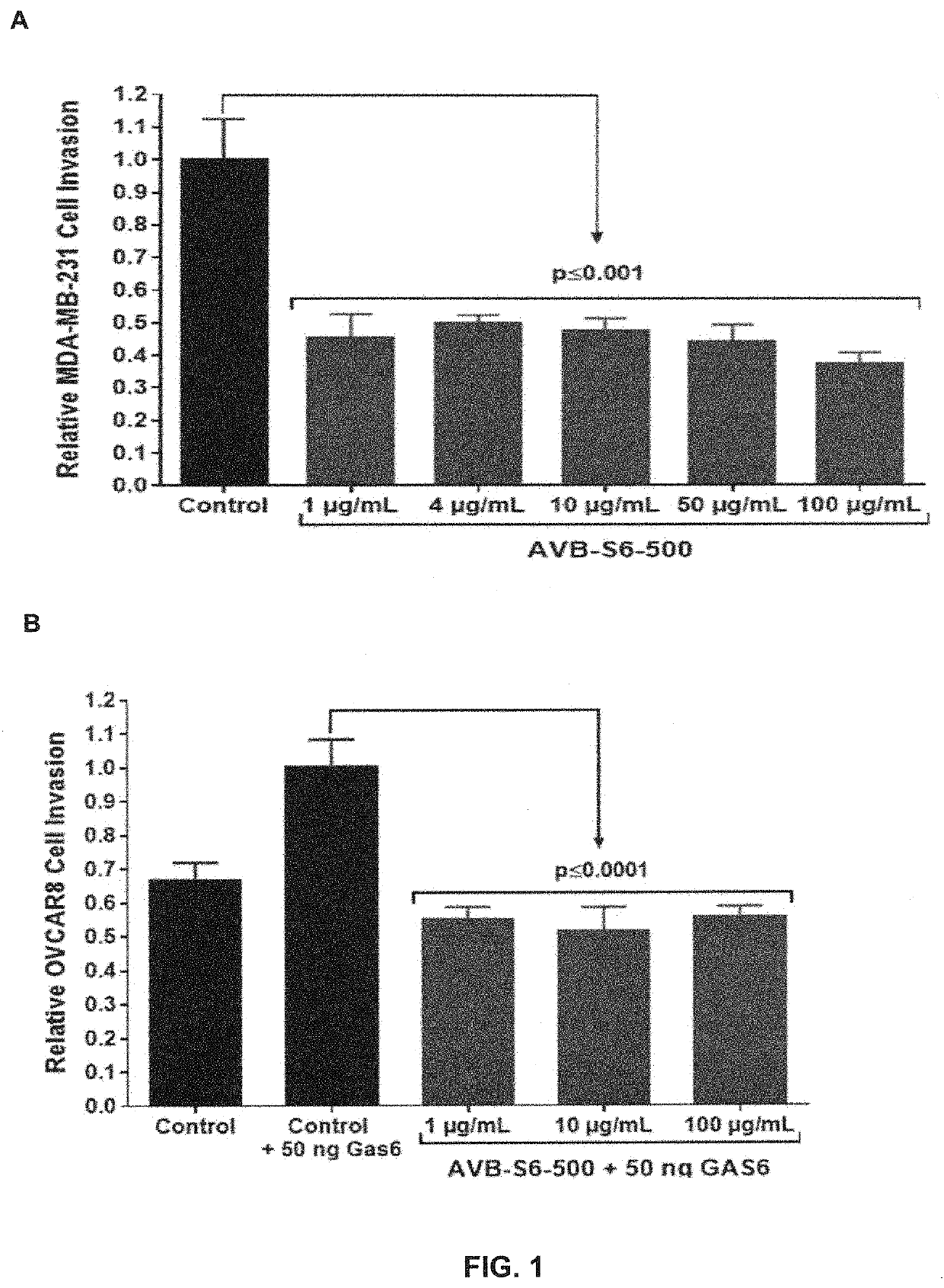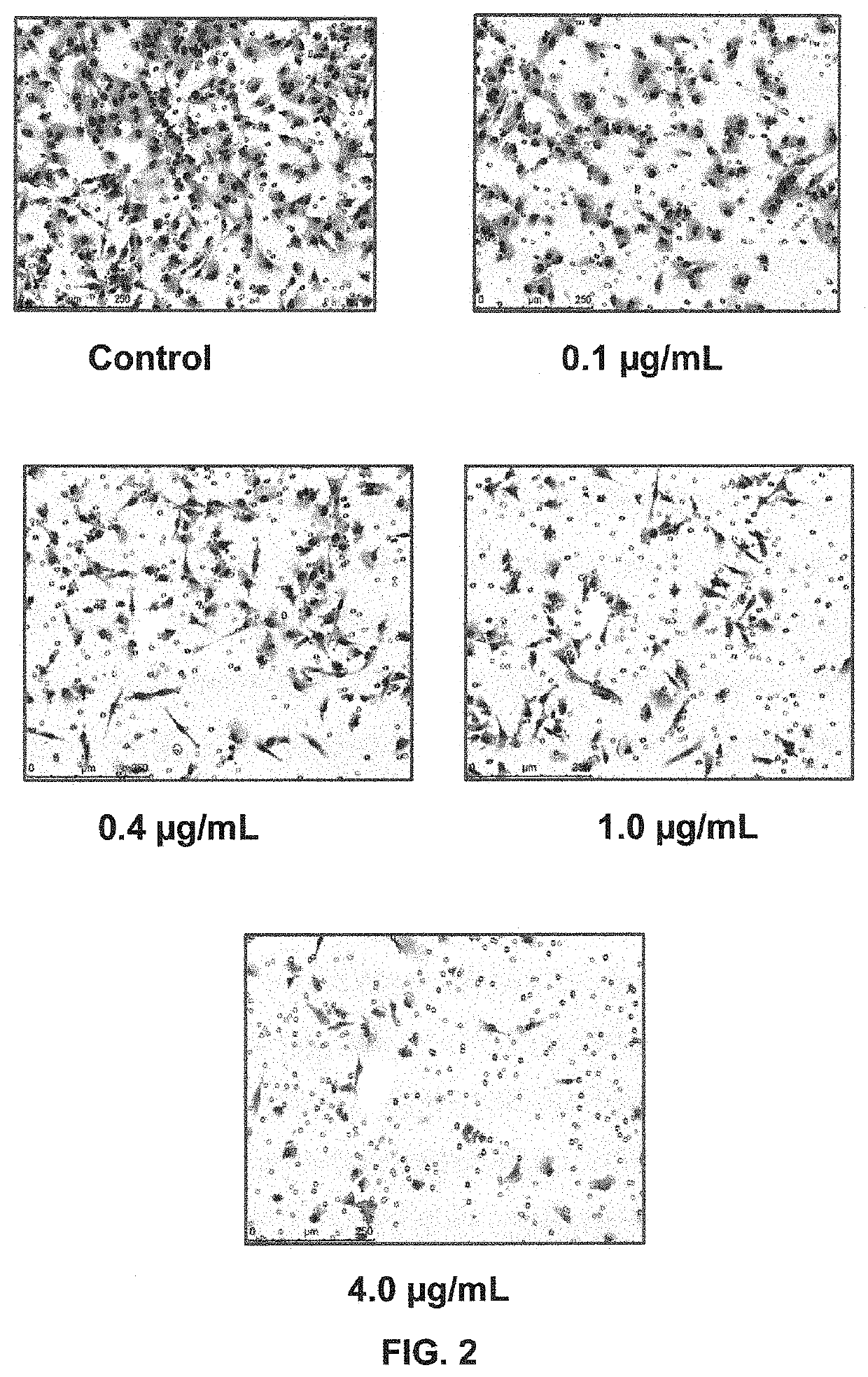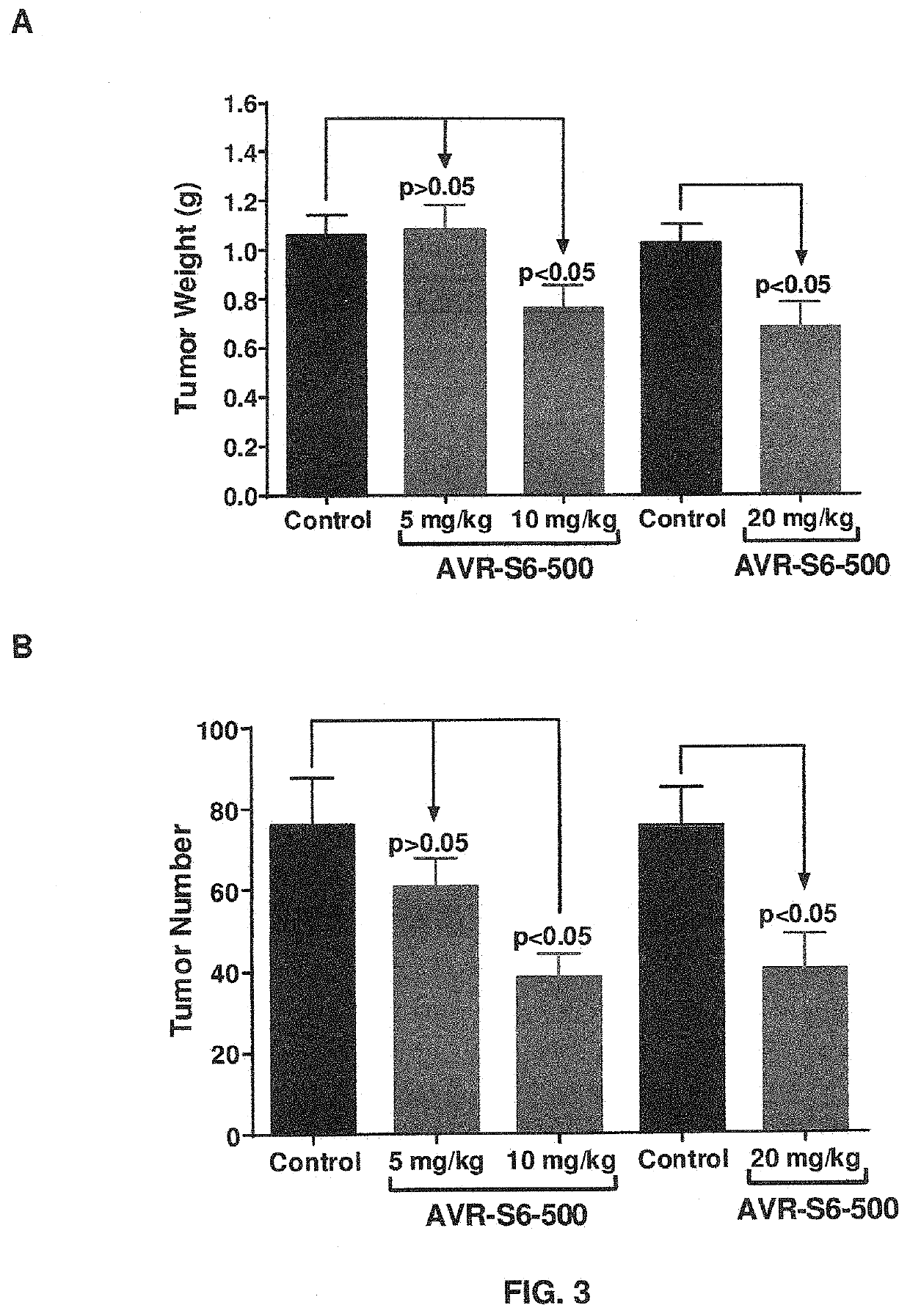Methods of treating metastatic cancers using axl decoy receptors
a metastatic cancer and receptor technology, applied in the direction of transferases, peptide/protein ingredients, drug compositions, etc., can solve the problems of poor prognosis, aggressive tumor behavior, and difficult to achieve long-lasting responses, so as to increase the therapeutic index of cytoreductive therapy
- Summary
- Abstract
- Description
- Claims
- Application Information
AI Technical Summary
Benefits of technology
Problems solved by technology
Method used
Image
Examples
example 1
Inhibition of GAS6-Induced Invasion / Migration using an AXL Decoy Receptor
[0133]Inhibition of GAS6-induced invasion / migration was evaluated in models for triple-negative breast (MDA-MB-231) and ovarian (OVCAR8) cancers using the Corning® Matrigel® or collagen invasion assays, respectively, and using an AXL decoy receptor which comprises a soluble AXL variant polypeptide comprising amino acid changes relative to wild-type AXL sequence (SEQ ID NO:1) at the following positions: (a) glycine 32; (b) aspartic acid 87; (c) alanine 72; (d) valine 92; and (e) glycine 127, lacking the AXL transmembrane domain, lacking a functional FN domain, and comprising an Fc domain linked to the soluble AXL variant polypeptide by a peptide linker (hereinafter referred to as AVB-S6-500).
[0134]AVB-S6-500 and MDA-MB-231 Axl+ TNBC cells in serum free media were seeded in the top of a Matrigel-coated Boyden Chamber. Media with serum as a chemo-attractant was added to the chamber bottom. After 24 hours incubatio...
example 2
Determination of IC50 Values and Comparison of an AXL Decoy Receptor Versus a Tyrosine Kinase Inhibitor in an MDA-MB-231 Cell Invasion Assay
[0135]AVB-S6-500 IC50 values were determined in a MDA-MB-231 cell invasion assay ±50 nM GAS6 and in a cell viability assay and compared to the IC50 of an approved tyrosine kinase inhibitor, bosutinib. Representative images from the AVB-S6-500 treated MDA-MB-231 cells are depicted in FIG. 2. As shown in Table 1, AVB-S6-500 was ˜100-fold more potent than bosutinib in inhibiting cell invasion and did not affect cell viability for a panel of 8 diverse cancer cell lines (colon, breast, AML, ovarian, pancreatic, and NSCLC) compared to seven cytotoxic / chemotherapy standard of care (SOC) drugs.
TABLE 1IC50 [μM]AssayAVB-S6-500AVB-S6-500 + GAS6BosutinibSOC (n −= 7)MDA-MB-231 cell invasion6.5 × 10−43.9 × 10−42.4 × 10−2—Cancer cell viability (n = 8)>100——0.8 ± 0.2 (n = 56)
example 3
Reduction of Metastatic Tumor Burden using an AXL Decoy Receptor
[0136]Mice were inoculated intraperitoneally (IP) with SKOV3.ip ovarian cancer tumor cells (1×106) and randomized into groups and AVB-S6-500 was administrated at 5, 10, or 20 mg / kg every other day (Q2D). Metastatic tumor burden was assessed after 24 days of dosing by counting all visible metastatic lesions in the peritoneal cavity and excising and weighing all diseased tissue to determine the overall weight (FIG. 3A) and number of metastases (FIG. 3B). AVB-S6-500 significantly reduced metastatic tumor burden when administered at 10 and 20 mg / kg. AVB-S6-500 monotherapy in the SKOV3.IP mouse xenograft model significantly decreased mean number and weight of macroscopic metastatic lesions at 10 and 20 mg / kg Q2D (equivalent to 2.5-5 mg / kg / week in humans) and abrogated serum free GAS6 levels.
PUM
| Property | Measurement | Unit |
|---|---|---|
| Dimensionless property | aaaaa | aaaaa |
| Dimensionless property | aaaaa | aaaaa |
| Dimensionless property | aaaaa | aaaaa |
Abstract
Description
Claims
Application Information
 Login to View More
Login to View More - R&D
- Intellectual Property
- Life Sciences
- Materials
- Tech Scout
- Unparalleled Data Quality
- Higher Quality Content
- 60% Fewer Hallucinations
Browse by: Latest US Patents, China's latest patents, Technical Efficacy Thesaurus, Application Domain, Technology Topic, Popular Technical Reports.
© 2025 PatSnap. All rights reserved.Legal|Privacy policy|Modern Slavery Act Transparency Statement|Sitemap|About US| Contact US: help@patsnap.com



